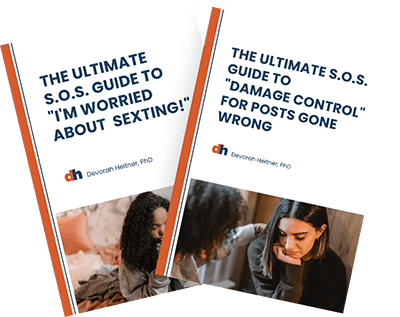The new digital tools of the 21st century offer unprecedented opportunities to create. Our most innovative schools are transforming from sites where the “empty vessels” (our children) are filled with knowledge to spaces where kids co-create knowledge with the teacher serving as “Lead Learner.” Libraries are changing, too. They are becoming active learning and creation spaces—not just a place to check out books.
“Screen time” is not what it used to be. For most of us, the concept of “media” is deeply rooted in broadcast media. And why not? We grew up with TV and radio—that is to say, with professionally-created content distributed in a one-to-many format.
The Internet changed all that, and what we see today is a much broader definition of media. Today’s digital natives don’t think of media as one-to-many. They think of it as participatory, not passive. That’s not to say that they won’t be happy perched in front of a TV program—it’s just that their view of media is not limited to that conception.
The Creativity / Consumption Continuum
When we lump everything into “screen time,” we fail to make a crucial distinction between creativity and consumption.
In actuality, it’s not binary—really, it is more of a continuum. For example, watching a TV show is clearly about consumption, but what about when your kids are tweeting along to a live broadcast? Or texting in their vote on American Idol? That’s a different relationship with the screen, to be sure.
What about watching a YouTube video about how to play Minecraft vs. making a “how-to” video on YouTube about Minecraft strategies? Even though they are employing the same platform (YouTube), the activities are completely different (passive vs. active).
There are also shades of difference in what they are creating, too. For instance, your teen might have a Tumblr blog (also known as a Tumblelog) with mostly reposted content—a collage, if you will. Or she could be writing her own original content rather than just curating others’ works? These are all shades in a rainbow of engagement.
So, what can you do you to foster this kind of creativity?
Setting Different Parameters
If kids are using their screen time for creativity over consumption, that makes you think differently about imposing limits, doesn’t it? It’s not passive “zombie time,” it’s learning and stretching their imaginations. What I recommend is rather than hard and fast “screen time limits,” consider the context. If your kid is composing a song on Garageband, maybe you might make that exempt from your family’s time limit rules. That would be very different that binge-watching a Netflix series. Though even binge-watching can have its place (out sick from school, the polar vortex like we have in Chicago at the moment, etc.), you can see how you might set different time limits on these different activities.
Writing and Creating
One way to help make the transition from passive to active is to encourage them to create their own books, music, and videos. There are so many great tools out there that are easy to use, and it might even be an activity that you can do together with your child. For instance, your kid can create her own book using Book Creator. Or how about a video of your favorite family activity using simple video editing software such as Windows Movie Maker or iMovie? Post it to YouTube, and it’s something your whole family could enjoy—even aunts, uncles, and grandparents!
Designing and Programming
Many tech folks idealize programming in Scratch or other programming languages as the ultimate in creativity with technology. As I have said elsewhere, programming is great! But only some kids will get excited about it—and you can’t force it. If your kid gets pumped up about designing houses, cars, fashion, or even a new kind of animal from within an app—those are all fantastic creative endeavors. But try not to value that over “simpler” creative projects. Using a drawing app to create original artwork is still creativity at work, and a offers a different level of engagement than simply scrolling though other people’s content?
Thinking Critically and Making Improvements
This is another great avenue for teaching important skills to your kids. How can you teach them to make assessments about existing content and/or products? Try to look at how kids are engaging with the world. You could have them create a parody of their least favorite TV show—why don’t they like it—and what they could do to make it better. Or maybe have them try to improve one of their video games. For kids not ready for actual video game design, they can prototype with pen and paper. This is a great way to get them thinking about how to make something better. Have them iterate different versions. You can introduce them to the idea of “user experience testing” if they seem ready to take that on. So many great possibilities.
Contributing to a Community
For many of us, social media is about consumption, but if used properly, it’s a great way to teach your kids about belonging to—and contributing to—a community. What are your child’s favorite hobbies? I’ll bet there’s a community out there for each of them. It could be crafting, knitting, cooking, playing guitar, soccer, video games—you name it. There’s a lot your child could learn about each of those activities. But even more importantly, it’s the opportunity to learn about the idea of making a contribution to that community. That is Digitial Citizenship for sure. You can model the idea of healthy participation, whether it’s in a digital or real-world community.
I hope this helps you think differently about your kids’ screentime. Anything strike a chord with you? Are there other things that you are already doing with your kids? I’d love to hear it—in the comments section below, on my Facebook page, or good old e-mail.


